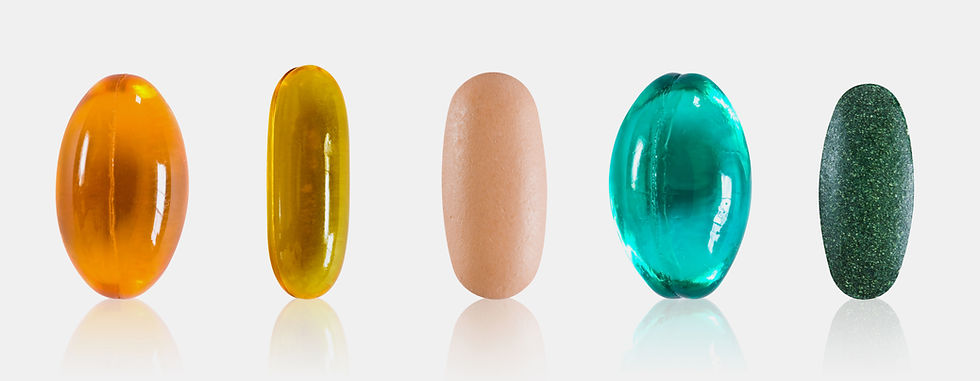Could low stomach acid be the cause of your GI issues?
- Meg O'Rourke
- Apr 18, 2023
- 2 min read
This week on the Harmony with Food Radio Show, I talked about acid reflux, low acid, and how to treat it!
What is acid reflux and what causes it?
The esophagus is mainly made up of smooth muscle and it extends from the throat all the way down through the chest cavity. When it gets past the abdomen, it joins with the stomach. When you swallow, the esophagus opens and then squeezes food down through contractions called peristalsis.
At the very bottom of the esophagus, there's a sphincter that you can think of as a valve. That valve separates the esophagus from the stomach. It should normally be closed, then when you swallow it opens up so food can pass through, and closes again once the food goes through.
Acid Reflux, GERD, and Barrett's Esophagus
Acid reflux occurs when the valve opens when it isn't supposed to. When the valve stays open, stomach contents like acid, digestive juices, enzymes, and food can flow backward from the stomach into the esophagus and cause symptoms.
Acid reflux can cause symptoms like heartburn, which is burning that is felt in the mid-chest area. It can also cause GERD, or gastroesophageal reflux disease, a more severe form of acid reflux where the stomach's contents flow back up into the esophagus. It can also cause coughing and a feeling like you have a lump in your throat.
In severe cases, GERD can lease to Barrett's Esophagus, which is pre-cancerous. So, we don't want the GERD to keep happening, but we also don't want to be on long-term PPIs because they are only meant for short-term treatment.

Testing for Acid Reflux
Normal stomach acid creates a pH of 1.5 to 2.5. When I do microbiome testing, the lab checks your stool sample for acidity. With stool, we want to see a pH of around 6.8. If it is too high or low, I will suggest neutraceuticals to help balance it.
If you're interested in testing, click the button below to schedule a free 45-minute call with me to determine which tests are right for you.
Effects of Low Stomach Acid
As we get older, the parietal cells in the stomach lining produce less stomach acid, called HCl, which is hydrochloric acid. By age 60, half of all people have low stomach acid, and by age 85, 80% of people will have low stomach acid. Acid-blocking medications, like PPIs, will also decrease stomach acid.
When your stomach's pH is higher than 3.5, it inhibits pepsin, which is essential for the digestion of protein. Stomach acid is also necessary for the absorption of many micronutrients, minerals, and more. It also acts as the first line of defense against food poisoning, h. pylori, and parasites.
Treating Low Stomach Acid
While PPIs may help your symptoms, they aren't intended for long-term use. They decrease your overall stomach acid, which can cause new symptoms, and they aren't treating the underlying issue. When my clients do functional microbiome testing, I have a full picture of what is causing their symptoms and create a plan to help treat their acid reflux naturally. Click HERE to schedule a free 45-minute call with me to learn more.




.png)


























Comments